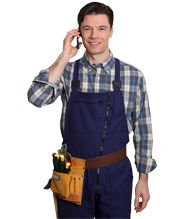Sliding doors have gained immense popularity in both residential and commercial spaces due to their sleek design, space-saving features, and ease of use. When it comes to sliding doors, one common question that arises is whether they require a bottom track. In this blog, we will explore the necessity of bottom tracks for sliding doors, discuss their function and design, and also consider alternative options for those who prefer a trackless approach. So let's dive in and unravel the mystery surrounding sliding door tracks!
Bottom Track or Not: Exploring the Necessity of Sliding Door Tracks
To understand the need for a bottom track in sliding doors, it's important to grasp how do barn doors work. Sliding doors typically consist of two panels, one fixed and one movable, which glide horizontally along a track system. The track system provides stability and ensures smooth movement of the door. While the top track is essential for guiding the door along its path, the necessity of a bottom track for barn door is a subject of debate.
The Great Debate: Do Sliding Doors Need a Bottom Track?
Advantages of Bottom Tracks
- Stability and Durability: A bottom track enhances the stability of the sliding door, preventing it from swinging or swaying. It ensures a secure and reliable mechanism, especially for large and heavy doors. The weight of the door is distributed evenly along the track, reducing the strain on the door structure and ensuring a long-lasting and durable system.
- Smooth Operation: The presence of a bottom track ensures that the door moves smoothly along its path, minimizing friction and ensuring effortless operation. The track provides a guided pathway for the door, allowing it to glide with ease. Without a bottom track, the door may become misaligned or wobbly, compromising its functionality.
- Reduced Noise: The bottom track for barn door acts as a noise dampener by absorbing vibrations and reducing the noise generated during the sliding motion of the door. As the door glides along the track, the track absorbs any vibrations or impacts, resulting in a quieter and more peaceful sliding experience. This can be particularly beneficial in spaces where noise reduction is a priority, such as bedrooms or office environments.
- Improved Energy Efficiency: With a bottom track for barn door, these doors can provide better insulation, preventing drafts and improving energy efficiency by maintaining indoor temperatures. The track helps seal the door tightly against the frame, reducing air leakage and improving the overall insulation of the space.
Breaking the Mold: Alternatives to Bottom Tracks for Sliding Doors
While bottom tracks offer several advantages, there are situations where a trackless approach might be preferred. Let's explore some alternative options for sliding doors:
- Top-Hung Sliding Doors: In a top-hung system, the door is supported by rollers attached to an overhead track. This eliminates the need for a bottom track and allows for a seamless transition between rooms. The weight of the door is borne by the top track, which is usually mounted to the ceiling or a structural beam. Top-hung systems are often used in architectural designs where a clean and minimalist aesthetic is desired. However, it's important to note that top-hung systems are more suitable for lighter doors and may require additional structural support to handle the weight.
- Floor-Mounted Guides: Instead of a full bottom track, floor-mounted guides can be used to guide the bottom edge of the top and bottom barn door. These guides are typically installed at the center or corners of the doorway, offering stability without the need for a continuous track. Floor-mounted guides are a popular choice for applications where a trackless solution is desired while still providing some guidance and support to the door. They allow for a smooth and controlled movement of the door while maintaining a visually clean and unobstructed floor surface.
- Wall-Mounted Sliding Doors: Another alternative is the use of wall-mounted sliding doors, where the door panels are directly attached to the wall. This approach eliminates the need for any tracks altogether, providing a clean and minimalist aesthetic. The door panels are mounted to the wall using robust hardware, such as wall-mounted tracks or brackets, which allow the door to slide smoothly. Wall-mounted sliding doors are an excellent choice for spaces where a trackless design is preferred, such as modern and contemporary interiors. However, it requires precise installation and may not be suitable for all door sizes or weight capacities.
Understanding Function and Design: Examining the Need for Bottom Tracks in Sliding Doors
The function and design of sliding doors play a crucial role in determining the necessity of a bottom track. Factors such as door size, weight, usage frequency, and desired aesthetic influence the decision.
- Door Size and Weight: Larger and heavier doors necessitate the use of a sliding barn door bottom track to ensure stability and smooth operation. The track distributes the weight evenly, preventing sagging and minimizing strain on the door structure. Without a barn door lower guide the weight of the door may cause it to become unbalanced or difficult to move. It's important to consider the weight capacity of the bottom track system and choose a track that can support the specific door size and weight requirements.
- Usage Frequency: Sliding doors that are frequently used benefit from the added stability provided by barn door lower guide. It ensures a consistent and reliable sliding motion, even with repeated daily use. The sliding barn door bottom track acts as a guide and stabilizer, preventing the door from swaying or shifting during operation. For high-traffic areas or commercial spaces where the doors will be opened and closed frequently, a bottom track for barn door is highly recommended to maintain smooth and reliable functionality.
- Desired Aesthetic: If a seamless and uninterrupted floor surface is desired, a trackless option such as floor-mounted guides or a top-hung system can be considered. These alternatives offer a more open and contemporary look. However, it's important to ensure that the chosen trackless solution can provide sufficient stability and support for the top and bottom barn door. The aesthetic preferences of the space should be carefully balanced with the functional requirements of the sliding door system.
Conclusion
Sliding doors are a versatile and stylish choice for any space, offering convenience and functionality. The necessity of a bottom guide for barn door depends on various factors, including door size, weight, usage frequency, desired aesthetic, and budget. While bottom guide for barn door provides stability, smooth operation, noise reduction, and improved energy efficiency, alternative options such as top-hung systems, floor-mounted guides, and wall-mounted sliding doors offer trackless solutions for those who prefer a more minimalist approach. By considering the specific requirements and preferences of the space, one can make an informed decision on whether a bottom guide for barn door is necessary for their sliding doors. Ultimately, the choice between a sliding barn door bottom track and a trackless solution should prioritize both functionality and aesthetics to create a harmonious and reliable sliding door system.


